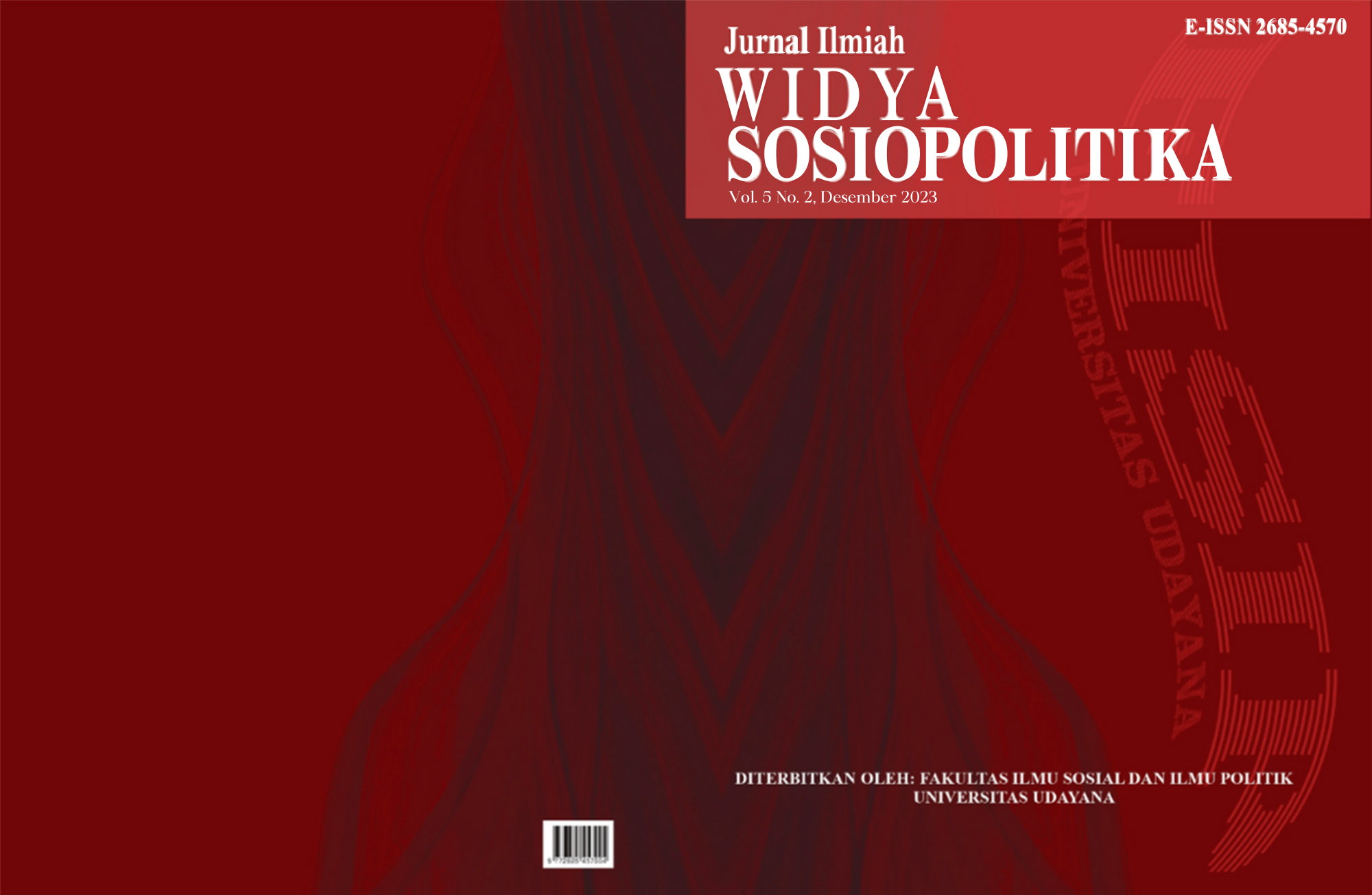Kebaya dan Budaya Populer: Pembentukan Identitas Ideologis Perempuan Modis oleh Kapitalis
Abstract
Balinese Kebaya is a custom clothing used by women when there is a Yadnya ceremony and even used simultaneously by the community on Thursday and Tilem Purnama. Mode Kebaya very quickly changes; almost every week, a new mode appears. Balinese women do not realize that Kebaya in fact the form of adoption of an external culture that blends in the consequences of the past trade. Balinese women do not realize that there is capitalist ideology in the movement of fashion Kebaya in Bali. This research is important to do to reveal the psychology of women in use kebaya Bali and reveal fashion ideology kebaya towards Balinese women. This research is examined using postmodern theory with an ideology approach that is described descriptively and qualitatively. The results show that the following mode, kebaya, is a representation of social class among Balinese women. Balinese women tend to be prestige wearing monotone kebaya. If there is a large special ceremony like Odalan (usually implemented once a year), then Balinese women, especially in Padambulia, feel obliged to have a new kebaya by following the fashion that was trending at that time. The capitalists succeeded in building a fashionable ideology on women with a very rapid change of fashion in order to control the market.
Downloads
References
Aprilia, D. R. (2005). klan dan Budaya Popular: Pembentu Identitas Ideologis Kecantikan Perempuan oleh iklan (Analisis Semiotika Iklan Cetak WRP Body Shape & Prolene). Jurnal Ilmu Komunikasi, 1(2), 41-68.
Arroisi, dkk..2022. Konsep Hasrat Perspektif Deleuze dan Al-Ghazali (Analisis Perbandingan Makna Hasrat dalam Psikologi. Jurnal Islamadina: Jurnal Pemikiran Islam (Volume 23, No. 1), 63-83.
Barker, C. (2018). Kamus Kajian Budaya. Dalam C. Barker, & N. Arya (Penyunt.), Kamus Kajian Budaya (B. H. Putranto, Penerj., hal. 137-138). Yogyakarta: PT Kanisius.
Fitria, F., & Wahyuningsih, N. (2019). Kebaya Kontemporer sebagai Pengikat antara Tradisi dan Gaya Hidup Masa Kini. Artrat, 128-138.
Melinda dkk.. 2022. Perilaku Konsumtif dan Kehidupan Sosial Ekonomi Mahasiswa Rantau (Studi Kasus Mahasiswa Toraja di Universitas Sam Ratulangi Manado). Jurnal Ilmiah Society (Volume 2 No. 1; ISSN: 2337-4004). 1-12.
Sugiyono. (2022). Metode Penelitian Kuantitatif, Kualitatif, dan R&D. Dalam Sugiyono, Metode Penelitian Kuantitatif, Kualitatif, dan R&D (hal. v-334). Bandung: Alfabeta.
Trismaya, N. (2018). Kebaya dan Perempuan: Sebuah Narasi tentang Identitas. JSRW (Jurnal Senirupa Warna), 6(2), 151-159.
Yani, Indah & Simamora, Irma Yusriani. 2022. Konflik Kepentingan dan Budaya Populer di Masyarakat. JIKEM: Jurnal Ilmu Komputer, Ekonomi, dan Manajemen (Vol. 2 No. 2, E-ISSN: 2774-2075), 1477-1486.




1.png)

3.png)








 Diterbitkan oleh Fakultas Ilmu Sosial dan Ilmu Politik Universitas Udayana
Diterbitkan oleh Fakultas Ilmu Sosial dan Ilmu Politik Universitas Udayana
